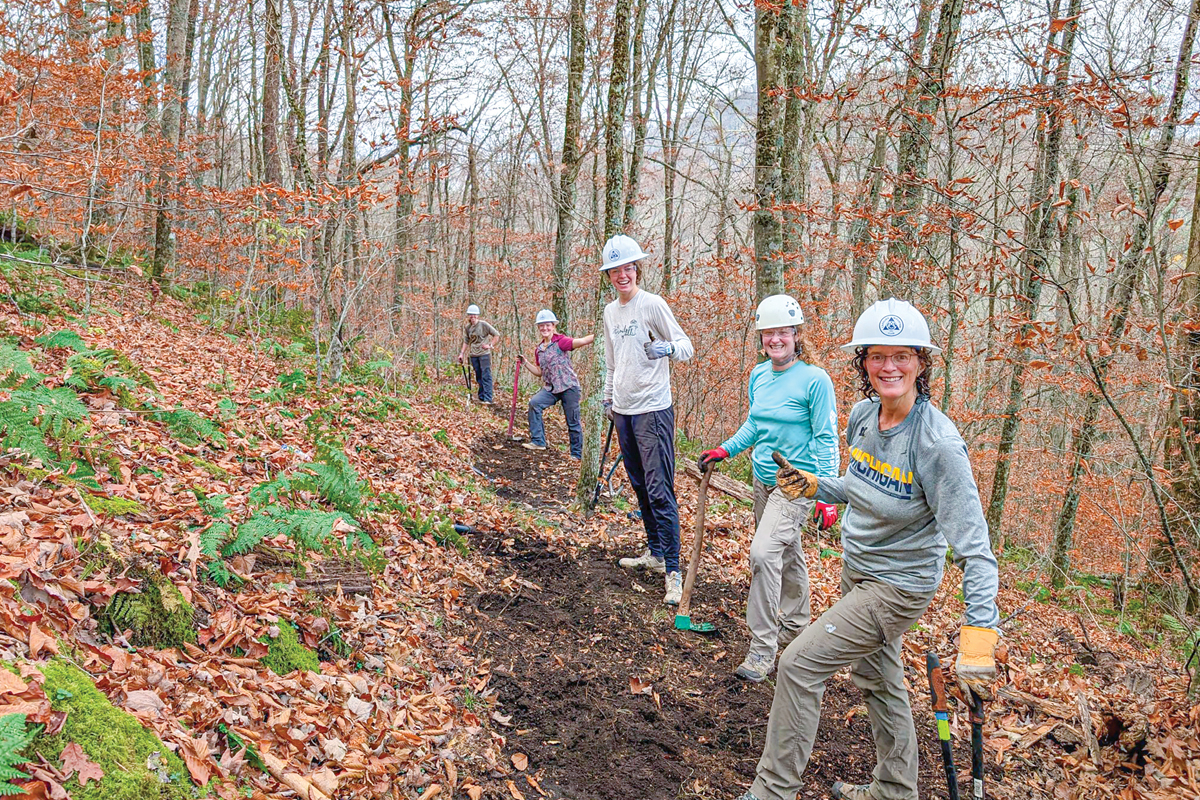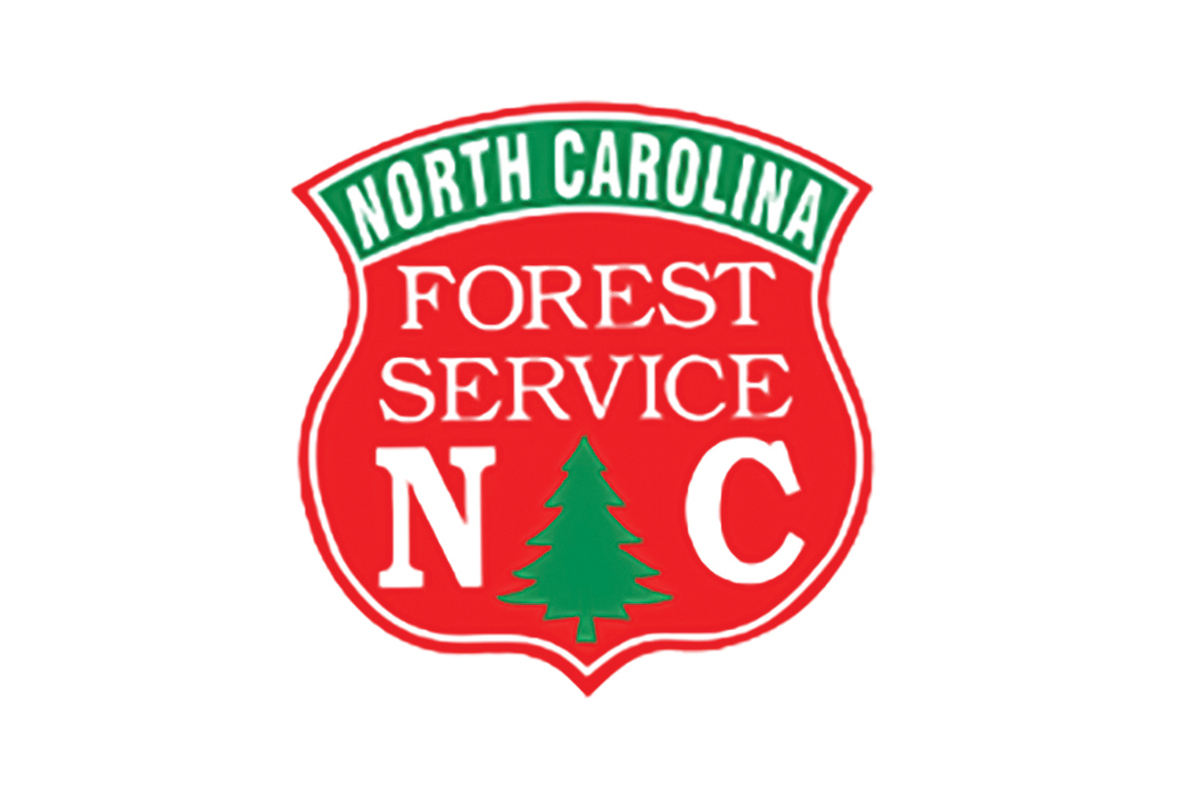Local farmers markets
Haywood
Waynesville Tailgate Market
8 a.m. to noon Wednesdays and Saturdays at American Legion parking lot near downtown Waynesville. Haywood County grown vegetables, fruits, cut flowers, honey and nursery stock.
Haywood’s Historic Farmers Market
8 a.m. to 1 p.m. Wednesdays and Saturdays in HART parking lot off U.S. 276 in Waynesville. Produce, plants, baked goods, cheese, meat, fish and more.
Haywood Fairgrounds Farmers Market
7 a.m. to 2 p.m. first Saturday of the month at the Haywood County Fairgrounds (second Saturday in July). Fresh veggies, fruits, plants and more. In conjunction with monthly flea market.
Jackson
Jackson County Farmers Market
9 a.m. to noon Saturdays in the municipal parking lot next to Bridge Park in downtown Sylva. Home-grown vegetable seedlings, native plants, flowers, herbs, vegetables, fruits, honey, jams, jellies, soaps, lotions, baskets, crafts and art.
Swain
Swain County Tailgate Market
9 a.m. to 1 p.m. Saturdays starting June 6 in front of Swain County Administration Building in Bryson City. Organic and sustainable growers of produce, plants, herbs and honey; art including jewelry, quilts, pottery, photographs and more.
Qualla Boundary
Cherokee Friday Farmers Tailgate Market
10 a.m. to 2 p.m. Fridays in downtown Cherokee on Acquoni Road one mile from U.S. 19. Fresh produce from local farmers and gardeners; look for organics and heirlooms.
Macon
Franklin Tailgate Market
8 a.m. to noon Saturdays starting June 6 in parking lot on Palmer Street (backside of Main Street across from Drake Enterprises). Homegrown fruits, vegetables, herbs, cut flowers, plants, eggs, locally made cheese, trout, and honey.
Rickman Store Market
3 to 7 p.m. Fridays at old T.M. Rickman Store located on Cowee Creek Road next to Cowee Elementary School. Vegetables, plants, flowers, organic eggs, baked goods and more, as well as local arts and crafts.
You, too, can bike to work
Whether it’s for fitness, for fun or to save the planet, there’s plenty of reasons to bike to work. There’s also plenty of excuses not to.
This week, The Smoky Mountain News sought out two people who make biking to work part of their lifestyle and asked them how they do it. Turns out, they have a perfectly good solution to excuses laid on by the rest of us — and some extra benefits we hadn’t thought of.
Long-distance commute
Odell Thompson is one of the few bike commuters with long-distance fans.
While sitting in his architect’s office in downtown Sylva last Friday, an email popped up from his parents in Texas who caught a glimpse of Thompson riding into work that morning on a web cam trained on Main Street.
“We saw your yellow bike go by on the web cam,” they wrote.
When Thompson started biking to work almost five years ago, it changed his life in ways he didn’t expect. Initially his impetus was exercise. Thompson’s bike ride from Cullowhee to Sylva takes about 30 minutes, compared to a 10-minute drive. But the extra time on this bike three days a week is what he should be spending on exercise anyway. Thompson likes to think of it as killing two birds with one stone.
“I am getting to work and getting home, and by the way I am getting an hour of exercise a day,” said Thompson, 49.
But what surprised Thompson was how much it added to his outlook on life.
“Riding to work gives me a good way to clear my mind before the day starts. At the end of the day when I need to decompress, riding home gives me the period of time and physical exertion to leave work at work and take care of myself mentally,” Thompson said.
Thompson doesn’t mind riding in the rain or in the cold of winter. It’s all about the right clothing, be it rain gear or warm layers. He carries his work clothes in a satchel on his bike and changes at the office. On hot days, he freshens up by taking a washcloth to his face and neck.
A common excuse among non-bikers is that they need their car during the course of the workday. While it is indeed a deal killer for some, Thompson knows ahead of time what days he has appointments out of the office and what days will be spent at his own desk, and therefore schedules his rides accordingly.
While it’s impossible not to worry about cars when riding a bike, Thompson takes several precautions to reduce the risks.
“My bicycle is very visible. I have yellow bags and yellow fenders and flashing lights all over it. I feel like I am visible enough and the cars will see me, but you are always aware,” Thompson said.
As an added perk, Thompson likes the fact he’s not using fossil fuels, especially last summer when a gas shortage led to long lines and high prices.
“I would pedal by and just look at everyone in line at the gas station and smile,” Thompson said.
Thompson believes he is doing his part for a more sustainable society.
“We need to adjust our thinking about everybody being able to drive everywhere in their own little hermetically sealed capsule, in particular here in the mountains because there is not a lot of flat land to build new roads,” he said.
Thompson said while saving the planet is a worthy cause, exercise remains his top motive.
Thompson’s final piece of advice: commit yourself for at least a month before throwing in the towel.
“The first time your butt will be sore and you will say, ‘I don’t want to do that anymore. That sucks.’ But if you do it religiously two times a week for a month, after that you are hooked,” Thompson said.
“Mast Transit” style
When the Mast General Store launched its “Mast Transit” program last year, offering a bonus of $4 a day to employees who biked to work, the timing couldn’t have been better for Jay Schoon.
Schoon, who works in the outfitters department of the Mast Store in Waynesville, was already contemplating a “bike to work” New Year’s Resolution.
He had a dilemma, however. He lived about 20 miles away from work in the rural Fines Creek countryside. The distance wasn’t an issue, nor a killer climb along the way. Schoon’s problem was the narrow country road with no shoulder during the first part of his ride.
Until a solution dawned on him. Why not drive half way, park his car at a roadside truck stop and bike the rest?
“I was being stubborn about living too far away,” Schoon said. “It just dawned on me I could drive part way.”
Mast compromised and gives Schoon $3 a day instead of $4 since he is still using his car some.
He actually applies the $3 to a life insurance policy that he probably would cut from his monthly budget otherwise.
“It pays for my life insurance in case I do get run over.” said Schoon, who’s 39.
As an added precaution, Schoon has a rearview mirror on his sunglasses to keep an eye on cars behind him.
He also stumbled upon a lovely shortcut that departs from the road and follows a newly created greenway from Lake Junaluska into downtown, making the majority of his ride very pleasant and car free.
“I love my bike ride,” Schoon said.
Schoon would recommend the drive-part-way, bike-part-way solution to anyone facing a similar stumbling block.
“Find a killer route, even if it is not on your way,” he said.
Schoon doesn’t wear special bike attire. Working at an outfitters store, a fleece sweatshirt and hiking pants are accepted work apparel, and ideal for pedaling in to work as well. Schoon is a self-described “lifestyle biker.” He’d always ridden his bike as a preferred mode of transportation — including on his first date with the woman who’s now his wife — and didn’t like giving it up just because he moved to the rural countryside far from town.
The time on his bike in the morning and afternoon has made a world of difference in his life.
“I was missing something. Part of my lifestyle was not quite right,” said Schoon.
Could hops be one of WNC’s new cash crops?
Tobacco is no longer the cash crop it once was in North Carolina, but its partner in crime — hops — could be on the way up.
Several small farms across Western North Carolina are experimenting with hops to supply regional microbreweries that pride themselves on a fresh, distinct beer taste.
“What we’ve discovered is ‘yes it will grow here,”’ said N.C. State University Cooperative Extension Agent David Kendall.
The next step is to see if it can be expanded, said Kendall. The mountains are probably the best part of the state for growing hops because the area has low humidity.
It is still “speculative” as to whether there is a market for the hops, said Kendall, but it looks promising.
WNC’s real chance to get into the hops business is by supplying local breweries, said Rita Pelczar, a Madison County hops grower.
Pelczar just started growing hops last year. She was successful with 20 plants, prompting her to add 160 plants this year. She and her husband grew five different varieties.
“They grew real well,” she said. “We spoke with several microbreweries and brewery supply companies and everyone seems excited about using locally grown hops.”
Because of her success, Pelczar received an $8,200 Sustainable Agriculture Research grant, which she will use to expand her operation. Growing hops requires a modest upfront investment in infrastructure, such as 12-foot trellises, she said.
If hops were grown locally, breweries would not have to pay transportation costs to get them from the Pacific Northwest, where most hops are produced, said owner and braumeister of Heinzelmannchen Brewery in Sylva Dieter Kuhn, who brews seven different kinds of beer.
Western North Carolina is beginning to take off as a hot spot for microbreweries, providing a viable market for hops growers.
Dieter’s wife, Sheryl Rudd, said beer at microbreweries is better than mass produced beer because it has an identity, is fresher and has not been sitting on a shelf.
Chuck Blethen, whose group Jewel of the Blue Ridge Marketing put on a workshop last week about growing hops in WNC, said the area is good for the crop because of its low humidity. Blethen noted that the environment is similar to Germany’s where 86,000 acres of hops are grown a year.
“We have potential for supplying hops for the East Coast,” said Blethen, adding that he thinks the idea might start gaining steam. “We think it’s got a great chance to go.”
With Asheville, which has numerous microbreweries, the area is becoming a popular place for specialty beers. Blethen said there are 68 microbreweries in WNC and eastern Tennessee.
There could be a demand for hops nationally and internationally as several large hop farms have recently gone out of business driving up the price as much as 500 percent.
Though there is a market for hops, WNC will never compete with Washington state, the leading hops producer with farms that are hundreds of acres.
In order for this area to be a strong producer of hops there must be a processing station, Kendall said. He is looking into how much such a station would cost.
The processing facility could turn the hops into pellets, dry the hops and include a lab to analyze the alpha and beta acids in the hops, Blethen said. The idea is that the station would be centrally located and available to the regional hops growers, said Blethen.
Wine grapes could also possibly be grown in this region and coupled with hops could be the basis of a good agri-tourism industry, Kendall said.
A call to action for the Southern Appalachians
By Brent Martin • Guest Columnist
In an article in Blue Ridge Country magazine, author and professor Steve Nash provided a bleak overview of what climate change means here in the mountains of Western North Carolina. Most significant are current predictedions for increasing temperatures, including a boost in the number of days over 90 degrees (75 a year predicted by 2080), and record drought (coupled with record intensity storms).
Changes such as these will alter the face of this ancient landscape in ways that we can hardly imagine. Iconic Appalachian creatures such as brook trout are expected to lose 50 to 90 percent of their habitat by 2080, and woodland salamanders dependent upon soil moisture could be wiped out altogether. High-elevation spruce-fir forest would also suffer. And these are but a handful of the projected impacts.
Given that climate change is now considered indisputable by every leading science organization in the world, one would think that as citizens we would be more alarmed and thus determined to make every change we can in order to reverse the momentum of this seemingly irreversible trend. Yet, according to some polls, almost half of all Americans are unsure that climate change is occurring. I suppose this is not surprising given the Bush administration’s denial of the issue for eight years, along with the limited media attention and public understanding. However, with the advent of the Obama administration, not only do we have immediate recognition of the issue but prompt action.
One of the administration’s first actions was the creation of an Office of Ecosystem Services and Markets. This office will be part of the U.S. Department of Agriculture, which includes the U.S. Forest Service and its 193 million acres of public land. The mission of this office will be to connect industrial emitters of carbon dioxide (CO2) with private landowners to plant new forests or crops to absorb their CO2 emissions. This could be a good thing for us here in Western North Carolina, where national forests make up over a million acres and private forest land totals another two million. Such incentives for forest and farmland conservation could be part of a broader agenda for our region to become agriculturally independent, to conserve our remaining working forests, and to mitigate the projected impacts of climate change.
With this “new climate” in Washington, and in anticipation of climate change impacts to our region, Warren Wilson College, The Wilderness Society, and Orion Magazine have come together to launch their first annual Headwaters Gathering March 27 to 29 at Warren Wilson. As our region is the source of drinking water for millions of downstream residents and is home to the East’s coal fields, the conference is aptly subtitled “Southern Appalachia at the Crossroads.” The conference will focus on the impacts of climate change in the region and what these impacts will mean to our economy, environment, and community well being.
Keynote speaker Herman Daly will be joined by activists Majora Carter and Winona LaDuke, retired coal miner Chuck Nelson, and renowned environmental educator David Orr. Also presenting are NOAA’s National Climatic Data Center scientist Thomas Peterson, author and activist Janisse Ray, New York Times writer Andrew Revkin, and National Wildlife Federation President Larry Schweiger.
From a town meeting with expert panelists, to intimate sessions with inspired leaders, the Headwaters Gathering will engage a broad array of citizens and inspire a new network of problem solvers. Registration and information is available at www.headwatersgathering.org.
(Brent Martin is the Southern Appalachian Director for the Wilderness Society, and his office is in Franklin. He can be reached at This email address is being protected from spambots. You need JavaScript enabled to view it..)
WNC continues to captivate
There’s something about Haywood County.
In recent years, the small Western North Carolina community has found itself as the setting of three nationally acclaimed novels.
It started with the release of Charles Frazier’s Cold Mountain in 1997. Audiences ate up the Civil War drama, and it wasn’t long before many flocked to see the real-life setting of the fictional account. Cold Mountain maps and tours sprang up to cater to tourists near the mountain’s location in Bethel. More than 10 years later, they’re still coming.
“I’ve been told that people come to the area specifically to ask where Cold Mountain is,” says Robert Busko, director of the Haywood County Public Library system.
This past year saw the release of two more novels that are putting Haywood County and Western North Carolina on the map — both literally, and in a more literary sense. Serena, by WCU professor Ron Rash, has won rave reviews in the New York Times, New Yorker, and Washington Post. Wayne Caldwell’s Cataloochee is fast gaining in popularity and was written up in Oprah’s magazine.
If the success of Cold Mountain is any indication, these works will very likely raise the national profile of the county and the region.
“It’s beneficial for the county — when you have writers writing about the area, people become curious,” says Margaret Osondu, owners of Osondu’s Books in downtown Waynesville. “It gives you a sense of pride.”
Rash and Caldwell’s successes, coupled with those already enjoyed by Frazier, are additionally cementing the region’s reputation as a literary hotspot.
“I would definitely have to say (it’s becoming better known),” says May Claxton, who teaches a course on Appalachian literature at Western Carolina University. “If you start to list all the authors from Asheville and over, it’s a very impressive list, and there’s still so many writers coming up with new stuff.”
A literary tradition
Though recent works have boosted the region’s profile, Western North Carolina has a literary legacy stretching back nearly a century. For example, Horace Kephart’s Our Southern Highlanders, published in 1913, is still widely regarded as a leading manuscript on life in the Southern Appalachians. And Caroline Miller, who in 1934 became the first woman to win a Pulitzer prize, lived in Waynesville.
“I do think there’s some really quality writing coming out of the area, though I’m not sure that it’s really recent,” Claxton says. “We can go back to Kephart and others, and there’s sort of a history of really good writers. There’s an interesting question about whether we’re just getting more attention paid to (the region) now.”
Osondu agrees that authors have and do abound in WNC. Exactly what it is about the region that inspires and breeds writers is something she can only speculate on.
“I think it’s because it’s so beautiful and the pace of life is slow, so you have time to be inspired,” she says.
The Appalachian tradition of storytelling could also play a part, theorizes Claxton.
“There’s such a history of storytelling and all that’s been passed down, and people realize how important that is,” she says.
A league of its own
The South is known for breeding authors, but works from WNC could stand out because Appalachian literature has its own unique qualities.
“I think there’s something very special and very interesting and a little different about the works form here,” Claxton says.
Themes in Appalachian works tend to stray from those explored in traditional Southern writing. For example, says Claxton, the conflict tends to be between those who live in the area and “outsiders” coming in to exploit it, rather than between slaves and masters.
Plus, life in the region was often tougher than in other parts of the South, and it shines through in writing.
“If you think about living here as opposed to somewhere with a more congenial climate, people were tougher here, and more prone to look for the bad and good in life,” Claxton says. “Also, I think the work ethic here was really, really strong compared to other parts of the South.”
One particular theme common in both Appalachian and Southern literature — the land and a sense of place — resonates in the works of Frazier, Rash and Caldwell.
“The land is really the central character in all of these books,” says Osondu.
A connection to the land is a theme shared in works by many Southern writers.
“I think that Southern literature comes out of a particular place and is very connected to place in a way that urban-based literature is not as connected to nature,” Claxton says.
The emphasis on place is likely a major drawing point for readers yearning for a simpler time, when people lived off the land.
“I think part of the interest could stem from the rest of the country becoming more urbanized and getting away from that connection,” Claxton says.
That’s much the same reason that people move to the area in the first place.
“All these people that move into this area are looking for more of a connection to place and the culture here,” Claxton says.
That may be why books by Frazier, Rash and Caldwell — all of which explore the culture of the area — are widely read on a local level.
“All of those books circulate really well,” says Busko. “The local people like to read them because it’s their story, and the people that move here want to acclimate and absorb as much as the local culture as they can.”
Mental health crisis will need enlightened leadership
By Ed Seavey • Guest Columnist
The recent issue of the Smoky Mountain News (Jan. 16, “WNC Confronts Mental Health Crisis”) on the mental health crisis was interesting. Officials quoted proclaimed diplomatically that the issue is complex, as they wonder what went wrong with the mental health system. Though the issue of mental health is indeed complex, how we got there should be no mystery to those that have been involved in the process. Closed-door politics and the sovereignty of undying local control is what got us where we are.
The greening of America
“I suddenly think about my friends, you know, getting on their private jets. And I think, well, you know, maybe they have the right idea. Maybe all that we have to do is mouth a few platitudes, show a good, expression of concern on our faces, buy a Prius, drive it around for a while and give it to the maid, attend a few fundraisers and you’re done. Because, actually, all anybody really wants to do is talk about it.”
— Author Michael Crichton in 2007
That was Michael Crichton — the author of such books as Jurassic Park and, more to the point, State of Fear — speaking last year to scientists debating the reality of global warming and whether human activity is the culprit. For those who don’t know, Crichton has become the naysayers’ Al Gore, the person called to speak when a celebrity draw is needed at conventions and gatherings attended by those who say melting polar ice caps are just nature’s way.
Mountain roads cited as among the state’s most dangerous
By Julia Merchant • Staff Writer
Driving a tractor-trailer in Haywood County or a motorcycle in Swain? Use caution. Both counties top the list of AAA Carolinas recently released report on the most dangerous places to drive in North Carolina.
Living with a green state of mind: Western North Carolina residents take steps to reduce their carbon footprint
By Jennifer Garlesky • Staff Writer
Living “green” is a way of life for Mark and Darcia Bondurant. The Haywood County family of four works diligently everyday to reduce their carbon footprint by doing everything from buying locally produced food to heating their two-story mountain home with a passive solar design, a technique that utilizes the sun’s rays for warmth.
Go west yon hiker
A new hiking club has joined the ranks of an already burgeoning collection of trail trotters in WNC.






















